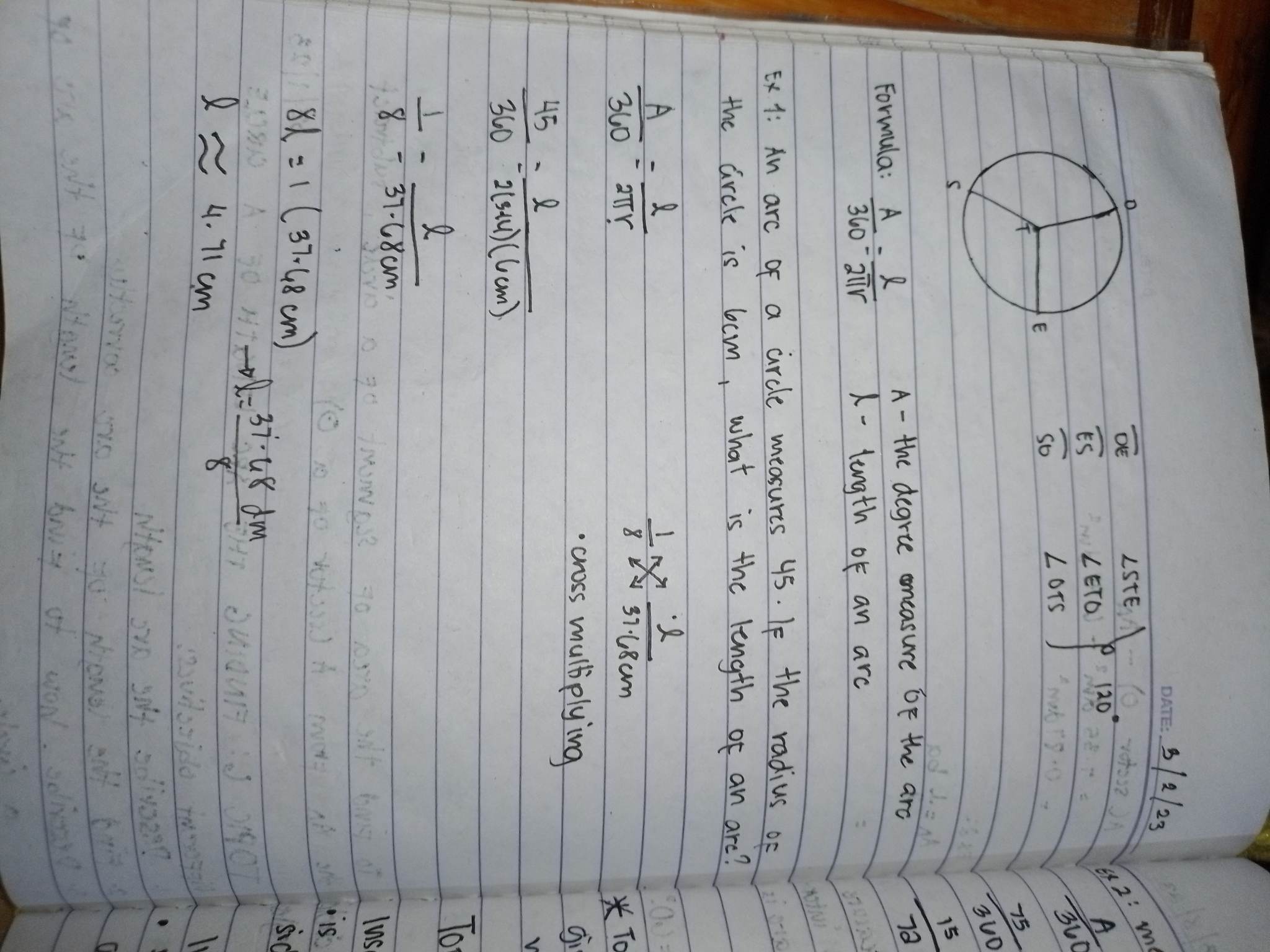Grade 10 MATH
Circles
A circle is a closed shape in which all points on the boundary are equidistant from the center. The distance from the center to any point on the circle is called the radius (r). The distance across the circle through the center is called the diameter (d), which is twice the radius. The circumference (C) of a circle is the distance around the circle.
angles related to circle
- inscribed angle
- central angle
<<radius always starts at the center<<
<<semi-circle s under the arc<<
}}minor arc is less than the semi-circle}}
}}major arc is greater than the semi-circle}}
Arcs and Angles
An arc is a portion of the circumference of a circle. The measure of an arc is the same as the measure of the central angle that intercepts the arc. A central angle is an angle whose vertex is at the center of the circle. The measure of a central angle is equal to the arc it intercepts.
<<Tangents<<
]]A tangent is a line that touches a circle at exactly one point, called the point of tangency. The tangent is perpendicular to the radius at the point of tangency]].
<<Chords<<
]]A chord is a line segment that connects two points on a circle.]]The diameter is the longest chord in a circle, and it passes through the center of the circle. The perpendicular bisector of a chord passes through the center of the circle.
<<Sector<<
]]A sector is a region bounded by two radii and an arc.]]
The measure of a sector is the same as the measure of the central angle that intercepts the arc. The area of a sector is a fraction of the area of the whole circle, and the fraction is equal to the ratio of the measure of the central angle to 360 degrees.
<<Segment<<
]]A segment is a region bounded by a chord and an arc.]]
The area of a segment can be found by subtracting the area of the triangle formed by the chord and the radii from the area of the sector.
Measure of Minor Arc and Major Arc
When a circle is divided into two parts by a chord, the arc that lies between the endpoints of the chord is called the intercepted arc. The measure of the intercepted arc is equal to the measure of the central angle that subtends it.
Minor Arc
]]The measure of a minor arc is less than 180 degrees.]]
Major Arc
]]The measure of a major arc is greater than 180 degrees.]]
Relation between Central Angle and Intercepted Arc
- The measure of a central angle is equal to the measure of the intercepted arc it subtends.
- For a minor arc, the measure of the central angle is less than 180 degrees.
- For a major arc, the measure of the central angle is greater than 180 degrees.
- The measure of a major arc is equal to 360 degrees minus the measure of the central angle that subtends it.
In summary, the measure of a minor arc is equal to the measure of the central angle that subtends it, while the measure of a major arc is equal to 360 degrees minus the measure of the central angle that subtends it.
Congruent Arc:
- congruent arcs are arcs of the same circle or of congruent circles with equal measure.
Congruent Circle:
- Two circles are congruent if they have the same radius.
Finding the area of sector of a circle
- m of a arc divided by 360
- Formula: A = πr²
- π = 3.14 (approximate value of pi)
- To find the length of the arc of the sector, use the formula: L = (θ/360)2πr.
Finding the area of segment of a circle
- Formula: A = (θ/360)πr^2 - 0.5r^2sin(θ)
- FORMULA: A = 1/2 bh
]]Finding the area of arc length of a circle]]
]]A/360= l/πr²]]
